Marktech Optoelectronics
3 Northway Lane North
Latham, NY 12110
Fax: +1-785-4725
Email: info@marktechopto.com
The broadest line of both silicon and InGaAs detectors commercially available.
Indium Gallium Arsenide (InGaAs) PIN photodiodes are made using InGaAs/InP technology.
Cutting-edge silicon photodetectors that excel in precise detection of light ranging in wavelength from 250nm to 1100nm
Monolithic “quads” or quadrant photodiodes (QPDs) are 2 X 2 photodiode arrays with four planar diffused photodiode elements or segments.
Marktech offers a broad line of silicon photo Transistors in a variety of package types ranging from miniature metal can to ceramic packages.
Our High-Reliability Photoreflectors are sensors that contain both the LED emitter and photodetector functions within a single package.
Marktech Si APD’s offer low-level light and short pulse detections of wavelengths between 400 nm and 1100 nm.
UV detectors are offered in a variety of TO metal-can type packages from TO-18 to TO-39 with special UV glass lens to insure optimum lifetime and the least amount of material degradation
With the ability to detect light in the UV, visible, and infrared spectrums, photo detectors, photo transistors, and photodiodes are being used in increasingly more applications.
Marktech offers the broadest range of emitters commercially available ranging from 235nm to 4300nm across the UV, visible, NIR, SWIR, and MWIR spectral ranges.
Marktech offers the broadest range of UV LEDs commercially available ranging from 235nm to 400nm including UVA, UVB, UVC, and deep UVC LEDs.
Our advanced line of visible LED products is engineered to deliver high-quality, energy-efficient lighting solutions across various applications from 400nm to 700nm..
Our NIR LED wavelength range is typically from 700nm to 1000nm, extending into wavelengths invisible to the human eye but crucial for numerous technological and scientific applications.
Our standard product offering includes wavelengths from 1020nm to 3000nm and operating currents ranging from 20mA to 350mA for high-power applications.
Our Point Source LEDs are specifically engineered for optical encoders, edge sensors, and other critical applications that demand highly focused light with minimal dispersion.
Multi-LED chips in a single package, our multiple wavelength LEDs are engineered to address a myriad of applications across the UV, visible, NIR, SWIR, and MWIR spectral ranges
Designed to produce a highly defined red dot or reticle, facilitating accurate aiming without revealing the location to the target.
Ideally suited for applications including edge sensing, line sensing, coin bill validation, and bar code reading
Our panels are crafted to deliver uniform, vibrant illumination across a wide range of applications, from consumer electronics to industrial displays.
Crafted with the latest LED technology, these rings provide adjustable illumination to meet specific needs, ensuring optimal visibility and enhancing the quality of your projects.
As a proud CREE LED Solution Provider for over a decade, Marktech offers comprehensive engineering support, including design, binning, and material selection, alongside custom packaging options for specialized applications.
CREE LED through-hole emitters, designed for high-temperature and moisture environments with UV-resistant optical-grade epoxy, offer a range of colors for versatile applications in signage and lighting.
CREE High Brightness (HB) SMD LEDs are the brightest, most reliable architectural, video, signage, scoreboard, roadway, and specialty LEDs available today.
CREE LED’s P4 series represents a leap in LED design, combining efficiency with aesthetic versatility to meet the demands of modern lighting applications.
Marktech’s CREE LED XLamp® offerings on aluminum core starboards simplify LED integration for designers, providing a range of colors and angles on compact boards for easy testing and implementation in varied lighting applications.
Marktech Optoelectronics introduces its new product line of CREE LED die, including the EZ1350 Series Die, packaged in TO-cans (TO-18 and TO-39 outlines) designed for precision and reliability in demanding applications with protection against environmental factors like moisture and dust.
Marktech Optoelectronics combines over 40 years of expertise in optoelectronics with a focus on customized engineering solutions, addressing specific customer needs and applications.
Custom photodiode detectors are designed to meet unique customer requirements, offering specialized performance features and cost savings through optimizations such as integrated filters, photodiode arrays, and hybridization.
Through our vertically integrated manufacturing facilities in California and Japan, we offer custom LED solutions, including packaging and optoelectrical categorization, enhancing product design and market readiness.
Multiple LED dies combined in a single package are engineered to address various applications across the UV, visible, NIR, SWIR, and MWIR spectral ranges.
To succeed, you need the exact optoelectronic package custom-designed and manufactured for your application, including hermetic metal SMD, TO-can, plastic SMD, and molded through-hole packaging.
Made-to-order semiconductor chips (die) and wafers are designed and fabricated to fit your needs. Standard dies are available in specific wavelengths for high-volume production applications.
Bare and encapsulated LEDs, photodiodes, and other components are assembled on FR4, metal-cored, and flexible circuit boards, ready for production.
Learn about the latest trends, devices, and potential applications.
The latest news and announcements from Marktech Optoelectronics.
Detailed information about common uses for Marktech Optoelectronics devices.
In depth discussions on LEDs, Detectors and the science behind them.
Become familiar with common terminology and concepts for LED Devices.
List of common concepts and definitions for Photodiodes.
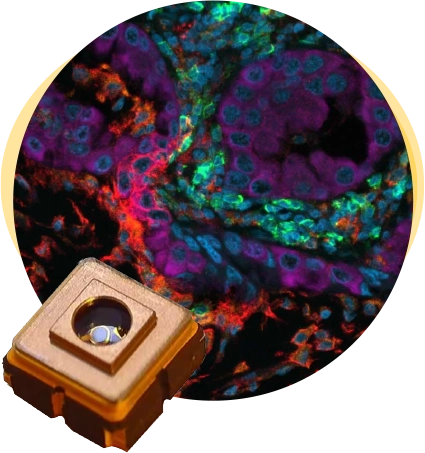
Marktech is a vertically-integrated company, allowing us to produce emitter components quickly, this decreasing your time to market. We can even produce your entire package in the United States.
To solve your needs, Marktech engineers will discuss with you:
Optimal drive current and temperature minimize degradation/ lifetime effects.
Forward current vs. ambient temperature:
Figures 1 and 2 show an example in which the current is derated to account for temperature. CREE technical data for LED lamps shows the permissible current values against temperature. Refer to this information when planning a new design.
The following example describes how to derate for temperature when designing:
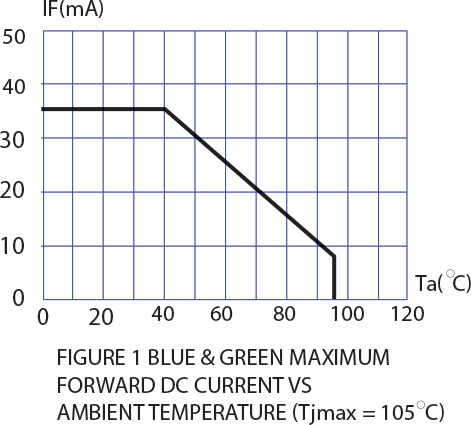
Figure 1 – Specified by design (25 mA) exceeds permissible value at 70C high temperatures
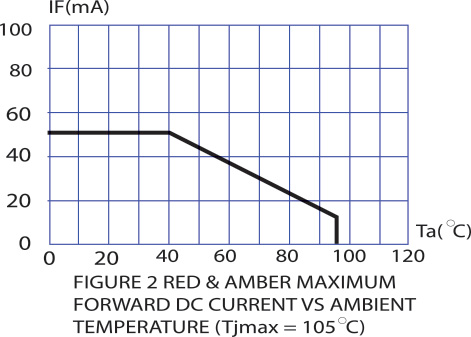
Figure 2 – Specified by design (25 mA) is within permissible value at 70C high temperatures
Characteristically, the luminous intensity of LEDs gradually decreases over the life of the LED. The rate at which the luminous intensity falls varies according to the material used and the forward current at which the LED is driven. The more significant the current, the greater the diminution of luminosity. Thus, when setting the forward current of the LED lamp, do not determine the setting solely from the temperature characteristics, as in the above example, but consider also longevity characteristics. An effective way of improving the longevity characteristics is to set the forward current of the LED lamp relatively low.
Spatial radiation characteristics: The lens or lens cap on an LED determines the angle-dependent output power obtainable. Lens characteristics also determine intensity peaks and coverage areas. Marktech products provide an excellent choice in beam angle, which must match the application and sensor needs. Marktech analyzes these radiation patterns using goniometer equipment.
Luminous intensity and directional characteristics Relationship between luminous intensity units and directional characteristics. Luminous intensity is measured in candela (cd), and the radiance is measured in watts/steradian (W/sr). One steradian is the solid angle at the center of a one-meter-radius sphere subtended by a square meter of surface area. The steradian is a metric unit. The radiance of light is the amount of luminous flux propagated in a given solid angle or the amount of incident. Hence, as the figures below show, the narrower the directionality of an LED lamp, the higher the luminous intensity of that lamp.
Hence, for an LED lamp of a given directionality, the higher the chip’s emission efficiency, the higher the luminous intensity.

Application Viewing angle
High-brightness LED information panel 15° to 30°
Signal applications 8° to 30°
Low-Brightness LED information panel 30° to 120°
Narrow-Direction indicator 30° to 60°
Wide-Direction indicator 60° to 120°
Automotive stop lamp 20° to 50°
Automotive dashboard narrow directionality 20° to 60°
Automotive dashboard wide directionality 60° to 120°
Marktech can custom tailor the viewing angle of an LED by flat, dome, or ball lens. A flat lens provide a wide angle or broad dispersion. Dome lensed LEDs have a narrower directionality or small viewing angle compared to flat lensed LEDs. A ball lens produces the narrowest beam.
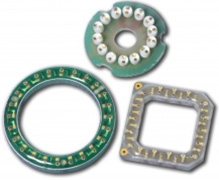
Constructed with FR-4, metalcore, or ceramic material, Marktech’s ring/chip offerings range from 280nm in the UV range, though visible to near IR; white light ring options can be made with color temperatures ranging from warm (2600K) to cool (10000K). Emitter, detector chips–or a combination of both–can be included in custom light ring packages. In most cases, Marktech can test to plus or minus 1 nanometer. Their size offerings range from 4mm in diameter to any required size.
Smaller-size light rings are typically manufactured with COB [chip on board] technology; however, standard surface-mount components such as 0805, 1206, and PLCC-type packages are also available, depending on the optical performance required.
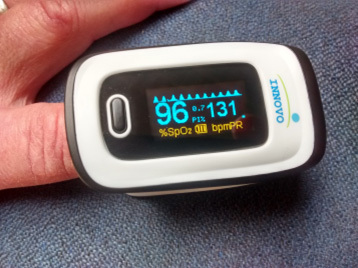
Pulse oximeter: Oxygen and pulse rate monitoring
Typical medical physicals now include quick and reliable readings of patient oxygen levels. Due to the low cost of access to the equipment, these findings can be duplicated with home monitoring. Your blood’s oxygen levels are easily determined by a simple pulse oximeter, which uses two different LED emitter wavelengths. Oxygenated blood tends to absorb light at 660nm; deoxygenated blood absorbs light better at 905nm. The saturated peripheral oxygen level from your fingertip is quickly determined by making measurements and interpreting the results using Beer-Lambert’s law.
Design, purchase, and modify LED-sorting equipment to bin LED products into selected chips that are tighter than +/—1nm.
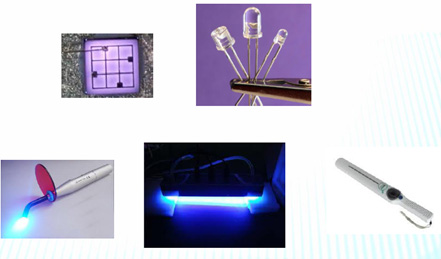
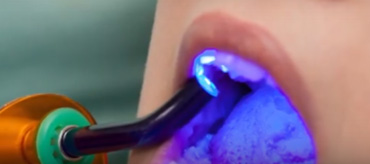
Ultraviolet LED emitter light curing is now used for applications ranging from dentistry to guitar finishes, including automotive, telecommunications, electronics, graphic arts, glass, and plastic decorating. Inks, coatings, and adhesives cured with UV LED light have dramatically improved physical properties. Traditional curing used highly inefficient and environmentally objectionable mercury lamps that could damage the subject matter if misapplied. UV LEDs, on the other hand, are highly efficient and offer a longer-life alternative to standard bulbs. Heat output is easily controlled with LEDs while lowering the time needed to cure, reducing the potential for damage to the cured object.
Marktech can optimize the emission wavelength for camphor quinone (CPQ) and other alternate materials used as the curing photoinitiator. Packaging can be optimized for access to, for instance, small dental probes optimized for patient use.
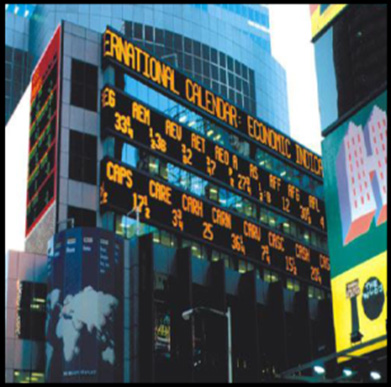
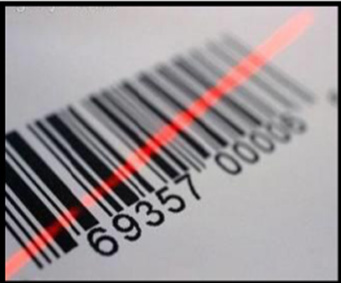
Bar code readers use emitters with:
Design, purchase, and modify equipment to sort LEDs for power output with selected/consistent binning.
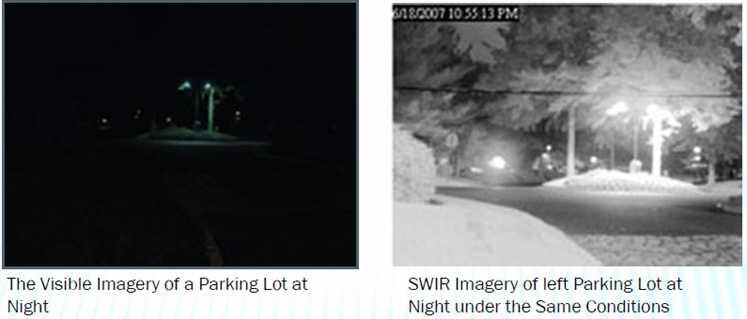
Short wavelength infrared (SWIR) and mid-wave infrared (MWIR) LEDs are the latest additions to Marktech’s broad lineup of light-emitting diodes. Marktech Optoelectronics is one of only a handful of manufacturers that supply emitters in the extended wavelength or SWIR range. Available in various through-hole and surface mount packages, SWIR emitters satisfy a growing need for high-speed light emission in ranges not easily seen by standard detectors and are also used for material and chemical analysis.
Medical, security, military, communications, industrial, analytical, metallurgy, power generation, and agriculture.
The rapidly growing market for SWIR includes applications such as produce inspection, security, surveillance, anti-counterfeiting, spectroscopy, moisture analysis, biomedical biofluorescence, blood chemistry analysis, night vision, safety equipment, currency validation, fiber optics, and silicon wafer inspection systems.
SWIR LEDs and detectors can help realize noninvasive imaging methods, such as optical coherence tomography (OCT) systems. These systems utilize SWIR to exploit the low scattering properties of >1μm light to see the previously unreachable, thick parts of the cornea.
Marktech’s standard product offerings include through-hole and surface-mount packages with wavelengths from 1050 to 2600nm and operating currents ranging from 20mA to 350mA for high-power applications. Higher mid-wave infrared (MWIR) wavelength LEDs with ranges up to 4300nm are available in specific package types. MWIR LEDs are vital in methane, carbon dioxide, and other gas analyzers.
The Marktech extended wavelength standard SWIR package offerings include our proprietary ATLAS hermetic SMD, TO-46 flat, TO-46 lens, TOPLED PLCC4, SMD 1206, SMD 1206 Lens, and SMD high-power black. Custom package options are also available.
Let us help select the perfect parts and services to make your application come to life.
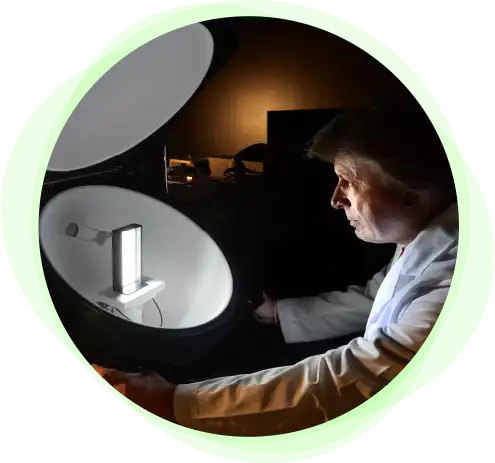
Do you need a small number of LEDs for your proof of concept? Or, are you looking to purchase a run for your prototypes? Visit our online stores at Digi-Key Electronics and Mouser Electronics today. In Japan, our products are now available through Rikei Corporation. In Israel, our products are now available through Militram. In Canada, our products are now available through ARL Group.
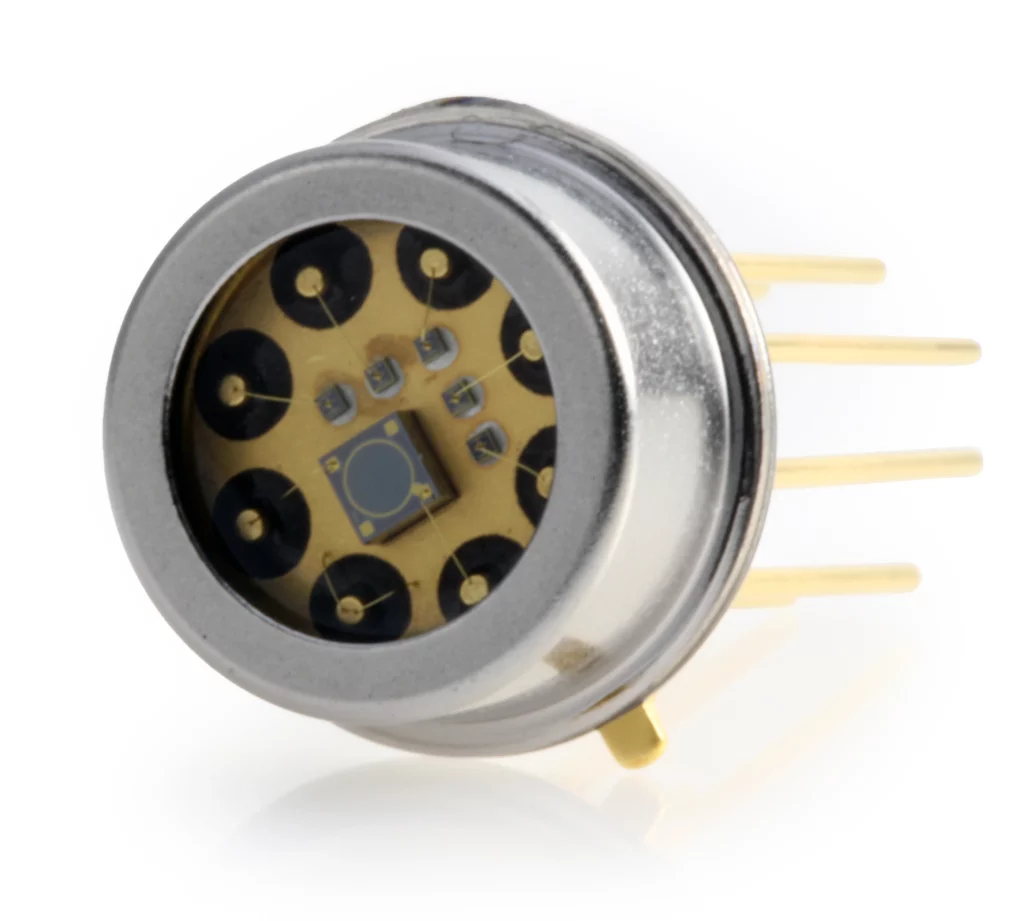

As our industry constantly changes and evolves, Marktech has been there since the start. Stay on top of new and upcoming technology trends, industry news and new product offerings.
Marktech Optoelectronics
3 Northway Lane North
Latham, NY 12110
Fax: +1-785-4725
Email: info@marktechopto.com